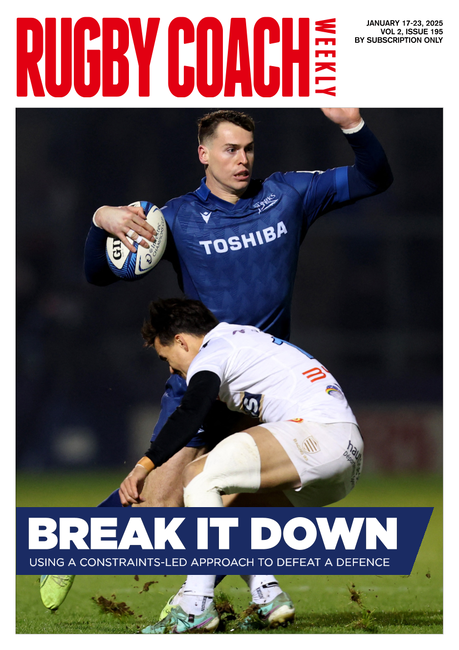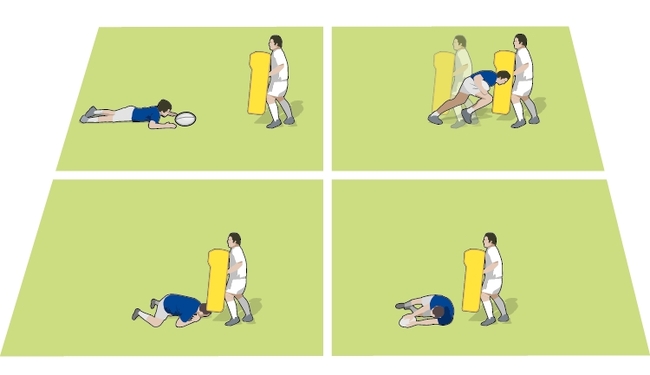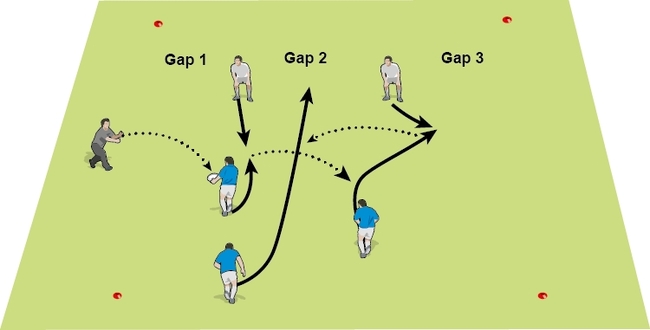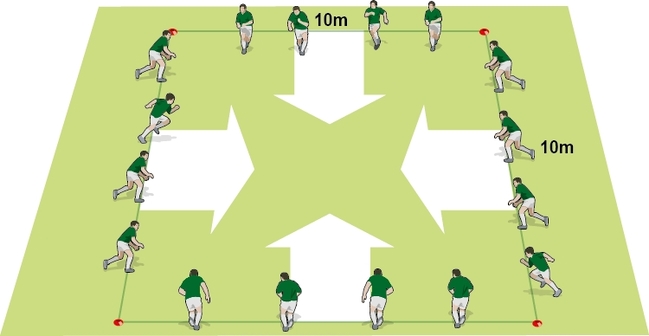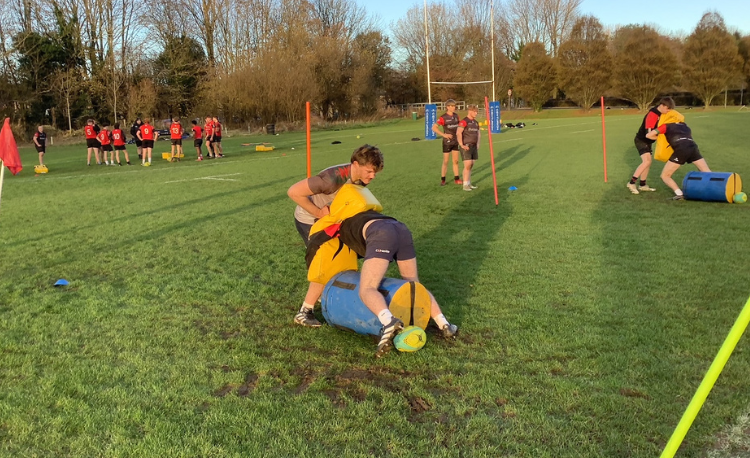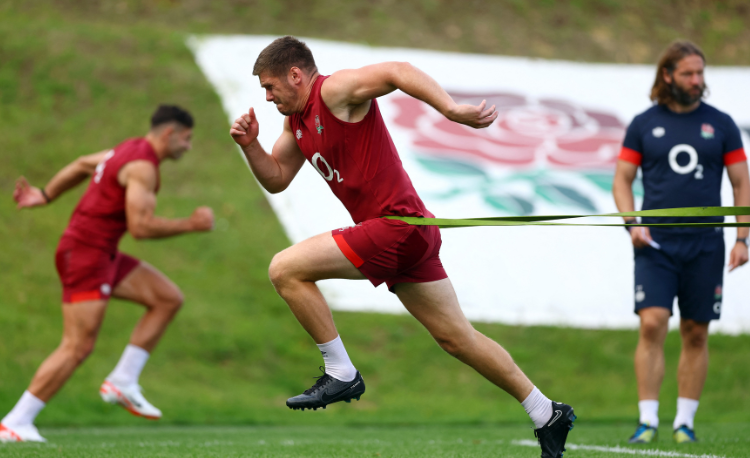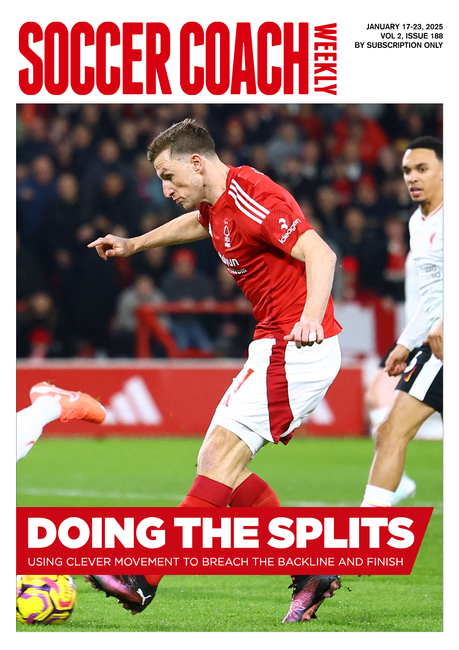Creating depth from a flat line
There are times in a rugby game when it is impossible to get into deep positions ready to attack effectively, for instance from a turnover or slow phase ball.
In these situations it is important that your players are aware of how they can create depth in situations where they start off in a flat line.
Try this problem based approach and see how your players get on.
Problem based approach
Scenario
Four players start in a flat line between two cones. They have to run forwards, passing the ball down the line so the last player can score at a flag 10 metres in front of him.
To start with let the players do their "natural" thing. This will probably involve them all setting off together, taking and giving passes at jogging pace. There will be a mixture of passes behind players, and forward passes, and probably a general sloppiness about their execution.
Exercise 1
Ask the players if they can create some depth so the fourth player is running at full pace when he receives the ball.
They will start by moving backwards to create a steep line and then realise that they can't keep up with the ball carrier. Passes will be dropped or simply thrown anywhere as the support players will be too far away.
Exercise 2
Now tell the players they cannot move backwards and must stand still until they start to run forwards.
What you will usually see is that they all set off together as before. When they receive the ball they will accelerate for a bit and then slow down to give the next pass. Player four will accelerate when he gets the ball to score.
Exercise 3
Insist that all players come from deep and at pace, to receive their pass at full spped. They can then slow down slightly to give the next pass.
The players should by now realise that the only solution is to set off at different times.
If they don't, then you can give them a hint that by letting the player inside them start counting to two before setting off.

Rugby drill progressions
You can give the players more problems by adding defenders to the rugby drill.
Initially the defenders should only more forwards in straight lines. As the players improve, allow the defenders to move sideways as well to ask more questions of the attackers.
The attackers will realise quite quickly that if they come from deep and at pace it is easier to see the space and break through the defensive line.
Get free tips and drills like this twice a week, sign up for the free Better Rugby Coaching e-newsletter today. Click here to join Better Rugby coaching today.
Newsletter Sign Up
Coaches Testimonials

Gerald Kearney, Downtown Las Vegas Soccer Club

Paul Butler, Florida, USA

Rick Shields, Springboro, USA

Tony Green, Pierrefonds Titans, Quebec, Canada
Subscribe Today
Be a more effective, more successful rugby coach
In a recent survey 89% of subscribers said Rugby Coach Weekly makes them more confident, 91% said Rugby Coach Weekly makes them a more effective coach and 93% said Rugby Coach Weekly makes them more inspired.
Get Weekly Inspiration
All the latest techniques and approaches
Rugby Coach Weekly offers proven and easy to use rugby drills, coaching sessions, practice plans, small-sided games, warm-ups, training tips and advice.
We've been at the cutting edge of rugby coaching since we launched in 2005, creating resources for the grassroots youth coach, following best practice from around the world and insights from the professional game.


